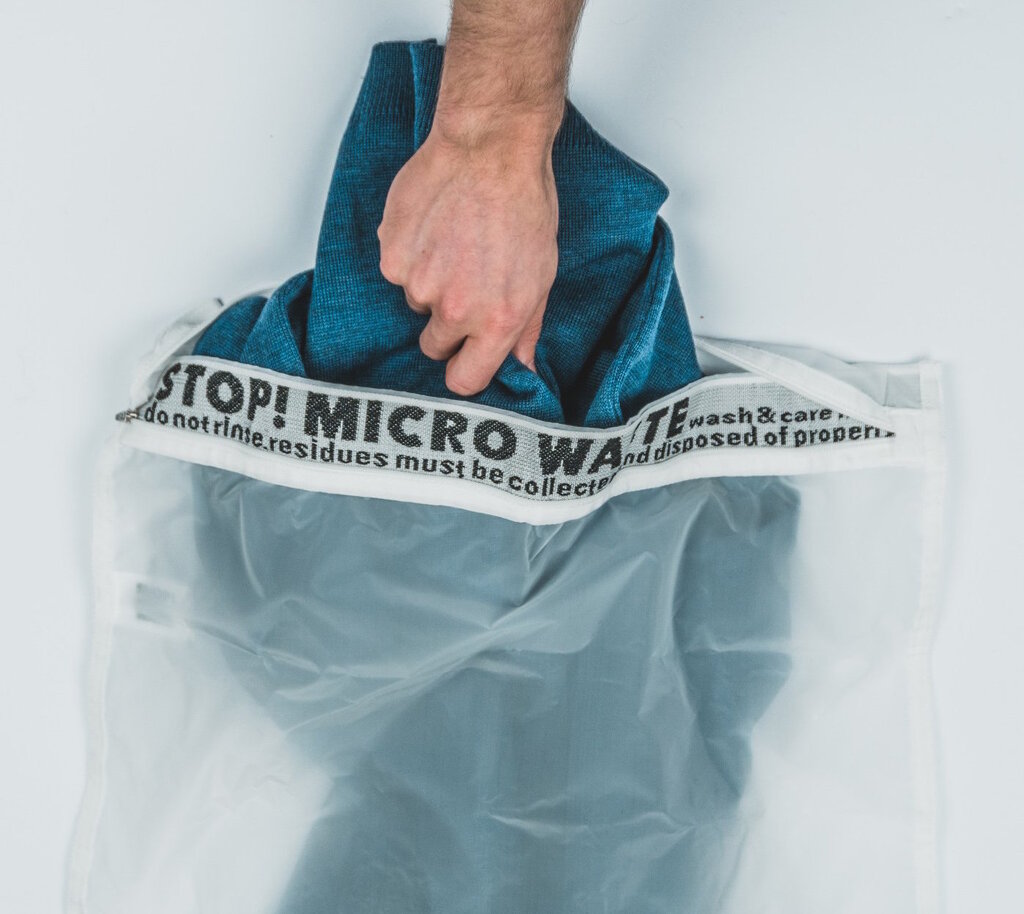What are microfibres?
Microfibres are strands of plastic fibres. They are a type of microplastic as they are under 5mm and not visible to the naked eye. They are non-biodegradable. There are an estimated 1.4 million trillion microfibres in the ocean!
Where do microfibres come from?
Microfibres come from synthetic materials such as polyester, acrylic and nylon. These materials are used in clothes, up to 60% of our wardrobes are made with synthetic materials!
How do microfibres get into the ocean?
Washing synthetic materials causes them to shred microfibres. One wash can release up to 9 million microfibres! To break that down, one wash of a synthetic fleece jacket releases 250,000 microfibres. The microfibres are then unable to be completely removed at waste water treatment centres and are therefore released back into our streams, river, oceans and back into homes through our taps.
Why are microfibres bad?
Microfibres can contain dyes, water repellents, plasticizers, ultraviolet stabilizers, flame retardants, stiffeners and phthalates which can be both toxic and carcinogenic. The nature of microfibres is such that in water they soak up surrounding pollutants such as motor oil, pesticides and industrial chemicals in a process called sorption.

There are two dimensions to the bad-ness of microfibres. Firstly the waste they present. They can not be removed fully in wastewater treatment and as a result 85% of the waste on shorelines is microfibres! Microfibres make up 35% of the microplastics in our oceans. Secondly the health issues surround microfibres and their consumption. Microfibres have completely infiltrated our water systems to the extent that we are eating, drinking and being rained microfibres! The microfibres in the ocean are being consumed by the world’s sea life and consequently by us. Research into the side effects of consuming microfibres is ongoing but currently suggests that animal consumption of microfibres causes abnormal growth and reproductive problems.
The research on microfibres and their full effects on humans is very limited and it’s extent not yet not fully understood. However when considering the substances within the microfibres, some deductions can be made. The toxic substances can be linked to cancer, asthma attacks and other respiratory problems. Additionally most additives used in plastics are known hormone disruptors that could cause disruption in fertility cycles, delayed neurodevelopment in children, immune disorders, and a higher risk of hormone-related cancers. Further to this there is little research on the effects of cooking microfibres and their effects on human consumption.
How to stop microfibres?
Thankfully there are ways to tackle microfibres! The quick fix is to get a Guppyfriend wash bag. By washing your synthetics inside this bag you can stop 99% of microfibres being released into the water stream. The Guppyfriend wash bag goes in the washing machine with your normal wash with all your synthetics inside. Inside the bag the garments actually shed less fibres (up to 86% less!). Alternatively you can get a lint microfibre filter to attach to your washing machine hose such as the Filtrol 160 that filters microfibres from your waste water. You can get the Guppyfriend washing bag here from the Ethical Superstore or click on the photos on right to check them out on Amazon.
A few simples way to reduce microfibres (whilst you’re waiting for your Guppy Friend or Filtrol 160 to arrive):
- Reduce friction in your washes to reduce the shredding by doing full washes, using liquid solution (instead of powder) and by dry spinning at lower revolutions.
- Cold wash as heat tends to cause higher shredding.
- Avoid synthetics! Shop natural and organic fabrics where possible. See the fabric guide here.
- Pass the message on, tell your mates about microfibres!
Pictures courtesy of: Guppyfriend ®

